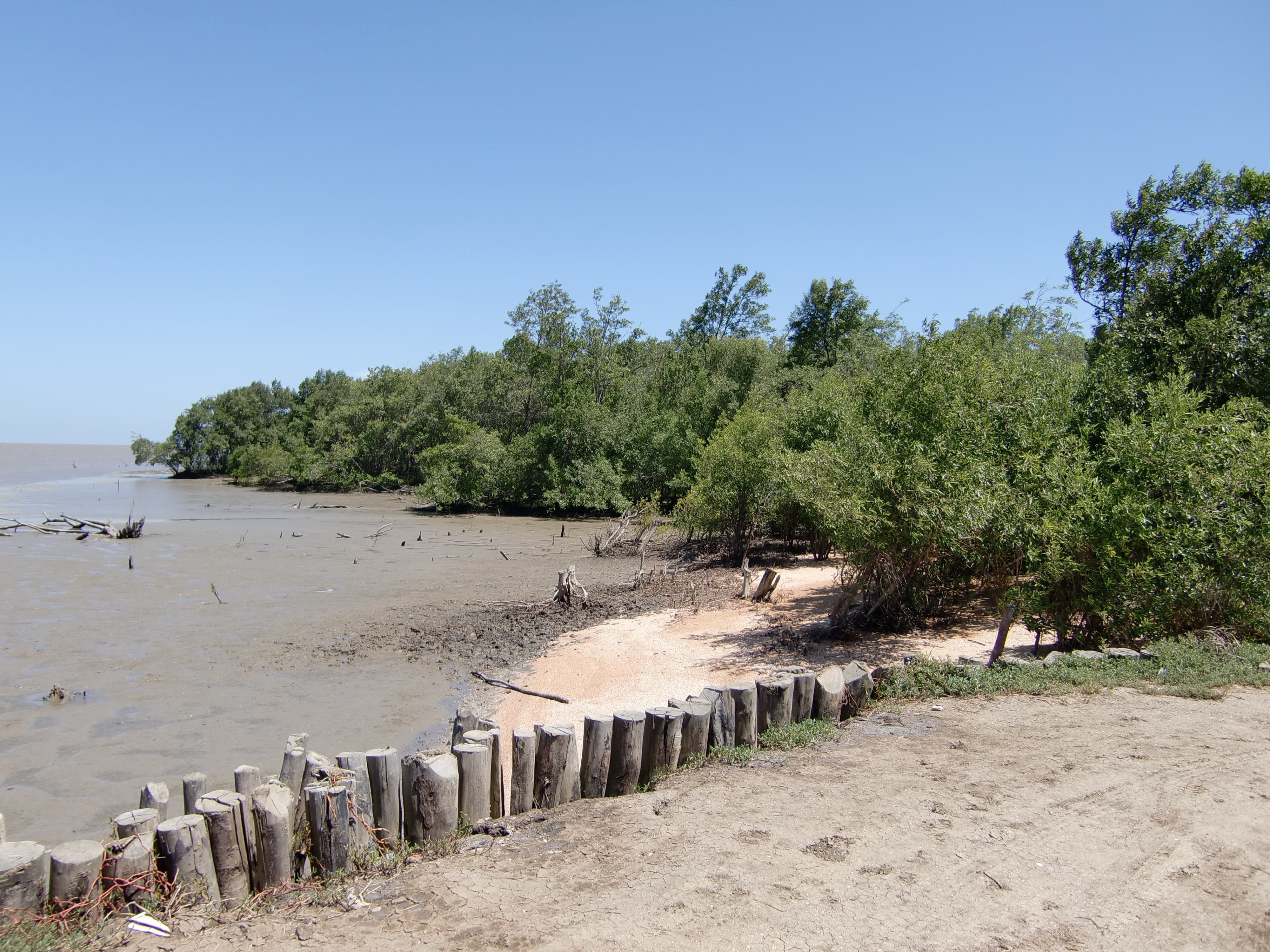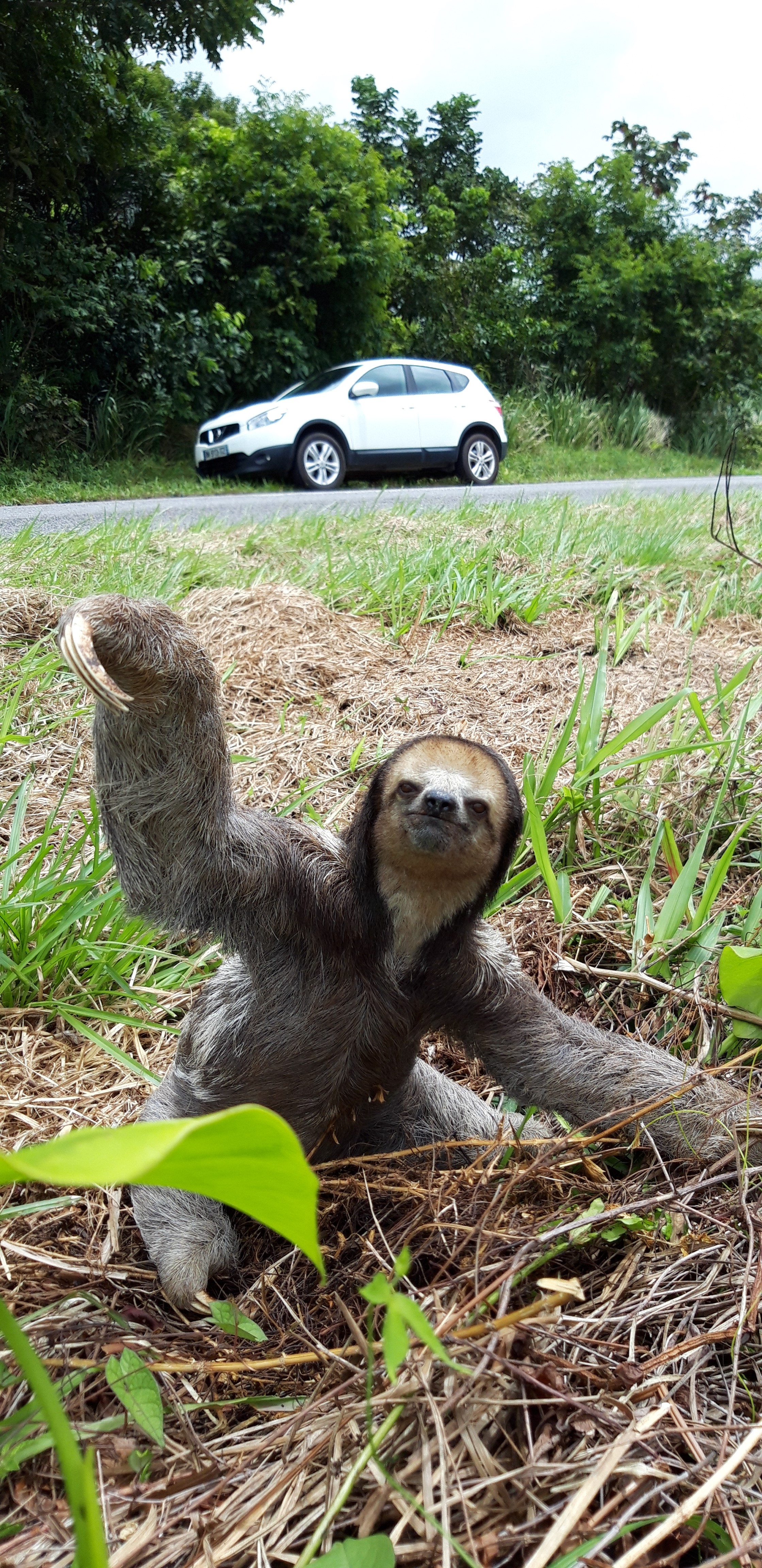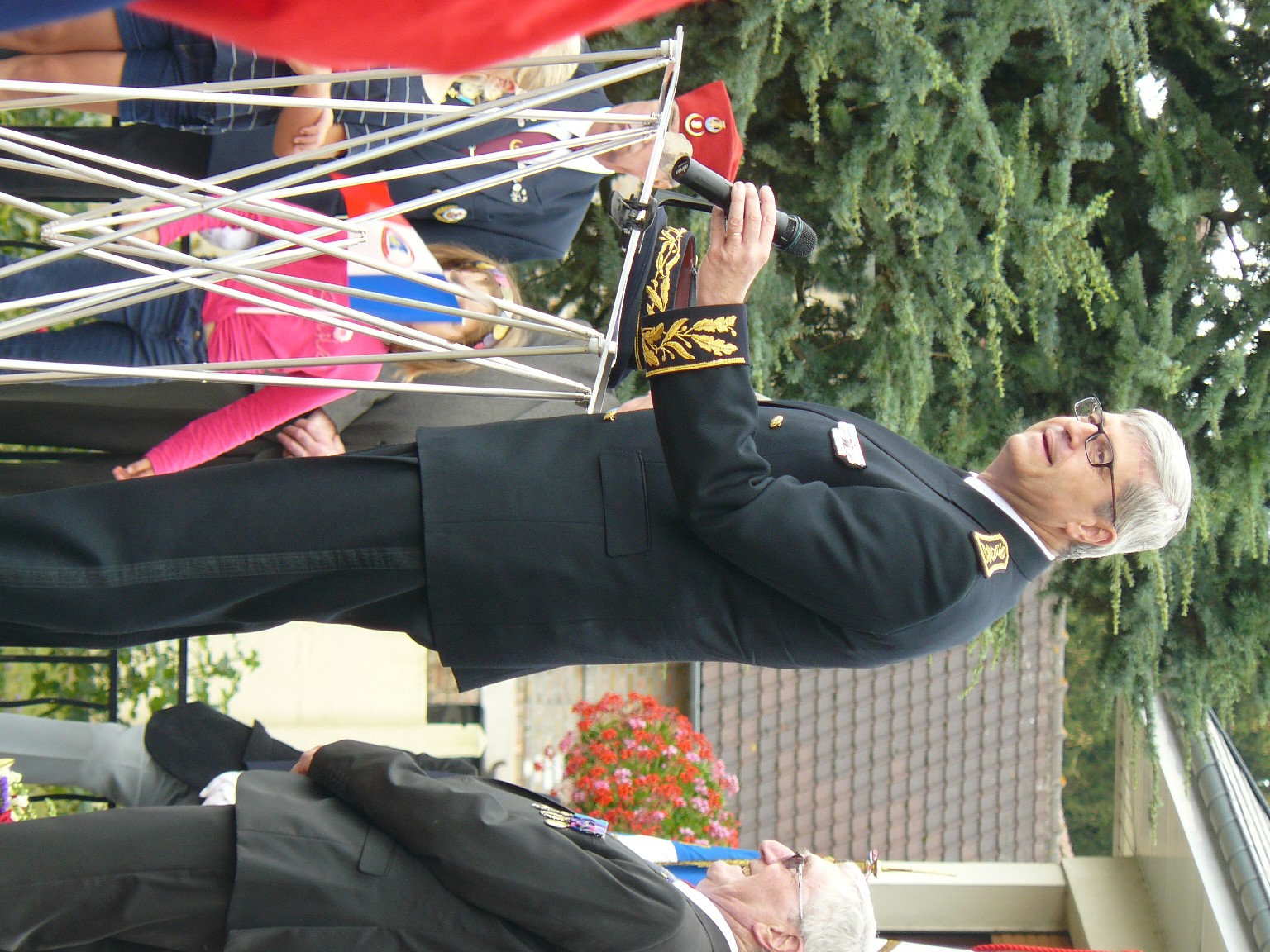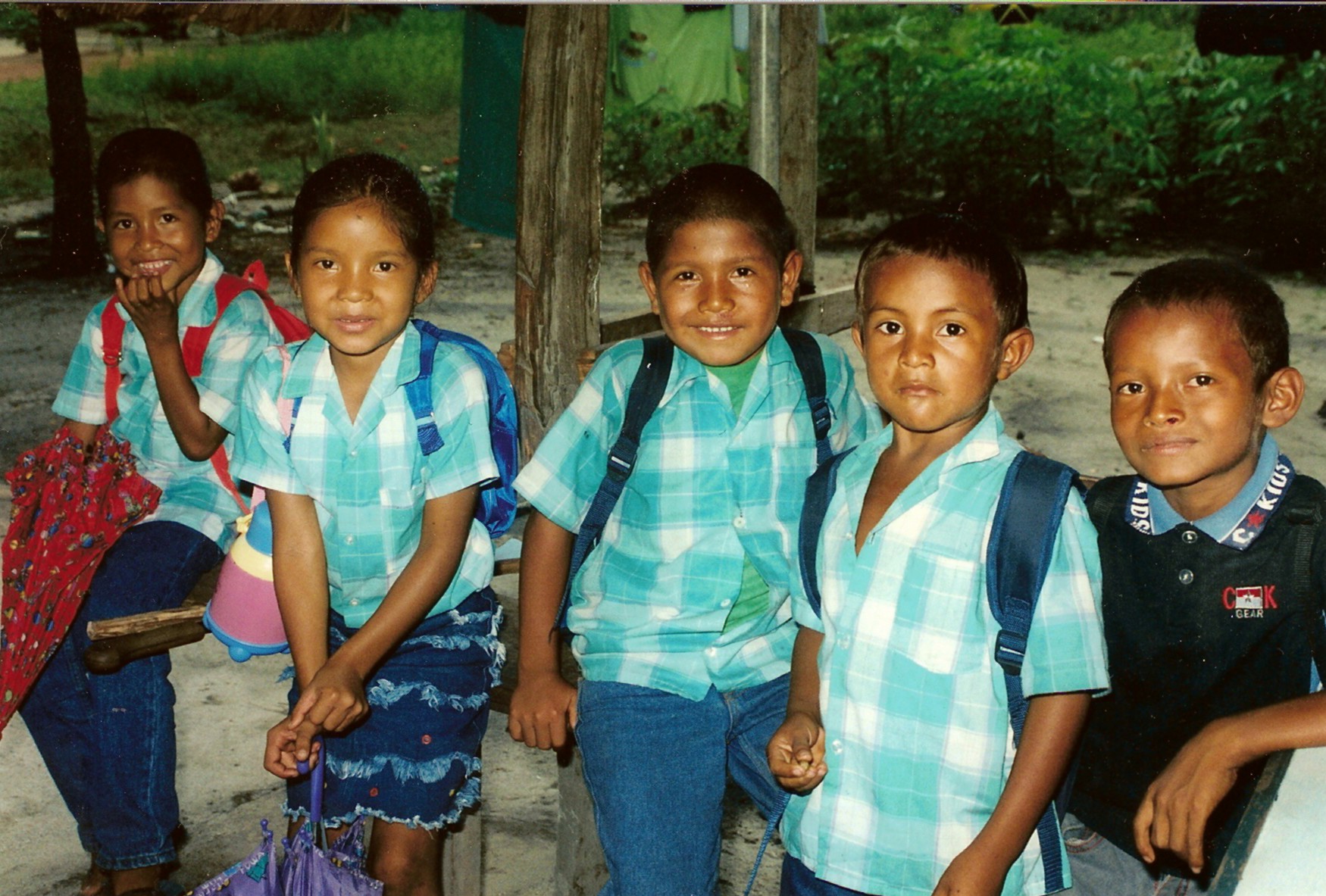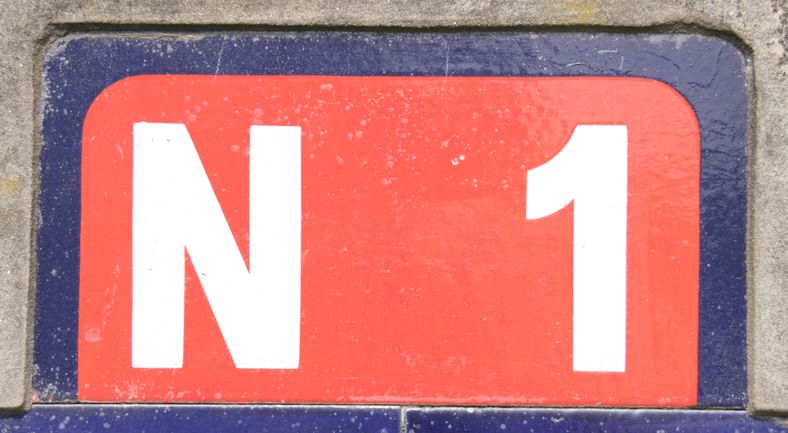|
Iracoubo
Iracoubo (; ) is a commune on the coast of French Guiana, an overseas region and department of France, located in South America. Geography The settlement of Iracoubo, seat of the commune, is located between the settlement of Sinnamary and the hamlet of Organabo. The village of Bellevue is west of Iracoubo. Trou Poisson, a near abandoned village is located to the south. The village has a cemetery of priests deported during the French Revolution. History The commune was originally settled by Amerindians near Organabo. The first settlers arrived in 1626, but were driven back. In 1765, the Galibis who had left the area for Suriname because an epidemic had broken out, returned. In the beginning of the 19th century, Iracoubo started as a cotton plantation owned by Colonel Jacquet. In 1859, the cotton shed is donated to the community to serve as church. During the late 19th century indigenous Kalina lived along the Rococoua river in Counama and Organabo. In 1886, Father Raff ... [...More Info...] [...Related Items...] OR: [Wikipedia] [Google] [Baidu] |
Saint Joseph's Church, Iracoubo
Saint Joseph's Church (French: ''Église Saint-Joseph d'Iracoubo'') is a Roman Catholic church located in Iracoubo, French Guiana, France. The church is known for its elaborate decorations on the walls and ceiling created by Pierre Huguet, a convict of the penal colony. The church became a historic monument in 1978. History Father Prosper Raffray arrived in Iracoubo on 6 March 1866. At the time, the village was home to about 500 to 600 people, and the church was located in a shed. Raffray set out to create a model village, and built a school, a clergy house and a real church. Construction of the Saint Joseph's Church started in 1887, and the church was consecrated on 6 January 1893. Pierre Huguet, a resident of Clermont-Ferrand, was sentenced to 20 years for burglary in 1889, and shipped to the penal colony of French Guiana. In 1893, he arrived at Camp Iracoubo, and started to paint and decorate the inside of the church. During his time at Iracoubo, Huguet decorated nearly 600 m2 ... [...More Info...] [...Related Items...] OR: [Wikipedia] [Google] [Baidu] |
Bellevue, French Guiana
Bellevue is an Amerindian Kalina village in the commune of Iracoubo, French Guiana. Overview Bellevue is an Amerindian village on Route nationale 1, approximately eight kilometres away from Iracoubo. Its inhabitants were originally residing in Grosse Roche, situated by the Atlantic Ocean. However, in the 1950s, they were resettled in Bellevue. While the village hosts a couple of shops, the closest accommodations can be found in Iracoubo. The village has a school. The Kali'nas (also known as Galibis), residing in Bellevue, continue to uphold some of their traditional practices (fishing, danses). In 1997, Cécile Kouyouri made history by becoming first female Amerindian
[...More Info...] [...Related Items...] OR: [Wikipedia] [Google] [Baidu] |
Trou Poisson
Trou Poisson is a village in the commune of Iracoubo in French Guiana. The village is near abandoned, and has a cemetery for priests deported during the French Revolution. Overview Trou Poisson was founded in the 1850s by Théodore Golitin. Around 1860, the population of the village was 112 people. The population declined dramatically in the 20th century. At the 2007 election it was the smallest polling office in France. In 2012, there were 43 registered voters, however most voters arrived from Iracoubo or Cayenne. The polling office worker estimated the actual population at 5 or 6 people. The village used to have a school, but it has been abandoned, and is near collapse. Sights Savane Des Peres, is located near Trou Poisson. It is a cemetery for priests who had been deported to French Guiana during the French Revolution. The site has been protected since 2016, and is managed by Conservatoire du littoral. The village is located in a large savannah A savanna or savan ... [...More Info...] [...Related Items...] OR: [Wikipedia] [Google] [Baidu] |
French Guiana
French Guiana, or Guyane in French, is an Overseas departments and regions of France, overseas department and region of France located on the northern coast of South America in the Guianas and the West Indies. Bordered by Suriname to the west and Brazil to the east and south, French Guiana covers a total area of and a land area of . As of January 2025, it is home to 292,354 people. French Guiana is the second-largest Regions of France, region in France, being approximately one-seventh the size of metropolitan France, European France, and the largest Special member state territories and the European Union, outermost region within the European Union. It has a very low population density, with only . About half of its residents live in its capital, Cayenne. Approximately 98.9% of French Guiana is covered by forests, much of it Old-growth forest, primeval Tropical rainforest, rainforest. Guiana Amazonian Park, the largest national park in the European Union covers 41% of French ... [...More Info...] [...Related Items...] OR: [Wikipedia] [Google] [Baidu] |
Crique Et Pripri Yiyi
Crique et Pripri Yiyi is a protected area in French Guiana, France. The protected area is a wetland, and as of 2008, also a Ramsar site under the name of ''Estuaire du fleuve Sinnamary''. It consists of mudflats, mangroves, freshwater swamps and seasonally flooded savannahs. Crique et Pripri Yiyi is located on the Atlantic Ocean coast in the communes of Iracoubo and Sinnamary. The protected area is delimited by the and Sinnamary Rivers. Name The word Pripri means marsh in French Guianese Creole, and Yiyi was the nickname of Sylvain Sophie who lived in the village of Trou Poisson during the 19th century. Flora and fauna Crique et Pripri Yiyi is home to West Indian manatees, bush dogs, Capybaras and common squirrel monkeys. The wetlands attract many migratory birds. The population of semipalmated sandpipers can reach up to one million birds. Other birds include masked ducks, Muscovy ducks, snail kites and scarlet ibises. The beach is a nesting and foraging area of the green sea ... [...More Info...] [...Related Items...] OR: [Wikipedia] [Google] [Baidu] |
COVID-19 Pandemic In French Guiana
The COVID-19 pandemic was confirmed to have reached the French overseas department and region of French Guiana. The first five cases were found on 4 March and the first death was announced on 20 April 2020. On 30 April, the territory was green listed, because the pandemic appeared to be under control except for Saint-Georges. In June, the virus started circulating all over the territory. As of 10 February 2023, a total of 240,930 vaccine doses have been administered. Background On 12 January 2020, the World Health Organization (WHO) confirmed that a novel coronavirus was the cause of a respiratory illness in a cluster of people in Wuhan City, Hubei Province, China, which was reported to the WHO on 31 December 2019. The case fatality ratio for COVID-19 has been much lower than SARS of 2003, but the transmission has been significantly greater, with a significant total death toll. Even though French Guiana is a large territory, the population in 2020 was . The interior of Fr ... [...More Info...] [...Related Items...] OR: [Wikipedia] [Google] [Baidu] |
Kalina People
The Kalina, also known as the Caribs or mainland Caribs and by several other names, are an Indigenous people native to the northern coastal areas of South America. Today, the Kalina live largely in villages on the rivers and coasts of Venezuela, Guyana, Suriname, French Guiana, and Brazil. They speak a Cariban language known as Carib. They may be related to the Island Caribs of the Caribbean, though their languages are unrelated. Name The exonym ''Caribe'' was first recorded by Christopher Columbus. One hypothesis for the origin of ''Carib'' is that it means "brave warrior". Its variants, including the English ''Carib'', were then adopted by other European languages. Early Spanish colonizers used the terms '' Arawak'' and ''Caribs'' to distinguish the peoples of the Caribbean, with ''Carib'' reserved for Indigenous groups that they considered hostile and ''Arawak'' for groups that they considered friendly. The Kalina call themselves ''Kalina'' or ''Karìna'' , spelled vario ... [...More Info...] [...Related Items...] OR: [Wikipedia] [Google] [Baidu] |
Galibi
The Kalina, also known as the Caribs or mainland Caribs and by several other names, are an Indigenous peoples of the Americas, Indigenous people native to the northern coastal areas of South America. Today, the Kalina live largely in villages on the rivers and coasts of Venezuela, Guyana, Suriname, French Guiana, and Brazil. They speak a Cariban language known as Carib language, Carib. They may be related to the Island Caribs of the Caribbean, though their languages are unrelated. Name The exonym ''Caribe'' was first recorded by Christopher Columbus. One hypothesis for the origin of ''Carib'' is that it means "brave warrior". Its variants, including the English ''Carib'', were then adopted by other European languages. Early Spanish colonizers used the terms ''Arawak'' and ''Caribs'' to distinguish the peoples of the Caribbean, with ''Carib'' reserved for Indigenous groups that they considered hostile and ''Arawak'' for groups that they considered friendly. The Kalina call them ... [...More Info...] [...Related Items...] OR: [Wikipedia] [Google] [Baidu] |
Communes Of French Guiana
The following is a list of the 22 communes in French Guiana, France. The communes cooperate in the following intercommunalities (as of 2025):Périmètre des groupements en 2025 BANATIC. Accessed 28 May 2025. * Communauté d'agglomération du Centre Littoral * Communauté de communes de l'Est guyanais * Communauté de communes de l'Ouest guyanais * |
Communauté De Communes Des Savanes
The Communauté de communes des Savanes (CCDS) is a ''communauté de communes'', an intercommunal structure in the French département d'outre-mer of French Guiana. It was created in January 2011, and its seat is Sinnamary.CC des Savanes (N° SIREN : 200027548) BANATIC, accessed 17 October 2024. Its area is 11,942 km2, and its population was 29,843 in 2018.Comparateur de territoire INSEE, accessed 8 April 2022. Composition The ''communauté de communes des Savanes'' comprises the following communes:Administration The '' ...[...More Info...] [...Related Items...] OR: [Wikipedia] [Google] [Baidu] |
Sinnamary
Sinnamary (; ) is a town and commune on the coast of French Guiana, between Kourou and Iracoubo. Sinnamary was the second French settlement founded in French Guiana: the town was founded in 1664. Sinnamary lies on the Sinnamary River and is home to the Guianan Soyuz launch site. In 1792, the first prison for priests and political enemies was constructed in Sinnamary. The town contains an Indonesian community, as well as a Galibi Amerindian community. Both communities produce artwork and jewellery that can be purchased. The main hotel in Sinnamary is the Hôtel du Fleuve. History The first colonists arrived in the area in 1624, however the town of Sinnamary was officially established in 1664. Sinnamary was taken twice by the Dutch, and once by the British, until in 1763, it was awarded to France by the Treaty of Paris. In 1764, about 40 families of Acadians, still living in exile after the Grand Dérangement nine years earlier, settled in Sinnamary. In 1792 during the F ... [...More Info...] [...Related Items...] OR: [Wikipedia] [Google] [Baidu] |
Route Nationale 1
The Route nationale 1 is a trunk road (Route Nationale (France), nationale) in France between Paris and Calais. It is approximately long. Reclassification The majority of the original road has been superseded by the A16 autoroute. As a result, much of the road has now been reclassified the RD 1001, RD 901 and RD 940. Route Paris - Saint-Denis, Seine-Saint-Denis, Saint-Denis - Beauvais - Amiens - Abbeville - Boulogne-sur-Mer - Calais - Dunkerque - ''Belgium'' Paris to Amiens (0 km to 130 km) The road begins at the Porte de la Chapelle in Paris and runs below the A1 autoroute as the Boulevard de President Wilson north through the northern Paris suburbs to Saint-Denis, Seine-Saint-Denis, Saint-Denis. The road heads through Saint Denis as the Avenue Lenine before heading north east. The road then heads to the east of Saint Brice Sous Foret, with the ''Foret Dominiale de Montmorency''. The road heads into the ''Foret Dominiale de L'Isle-Adam'' where the A16 autoroute starts, and ... [...More Info...] [...Related Items...] OR: [Wikipedia] [Google] [Baidu] |
